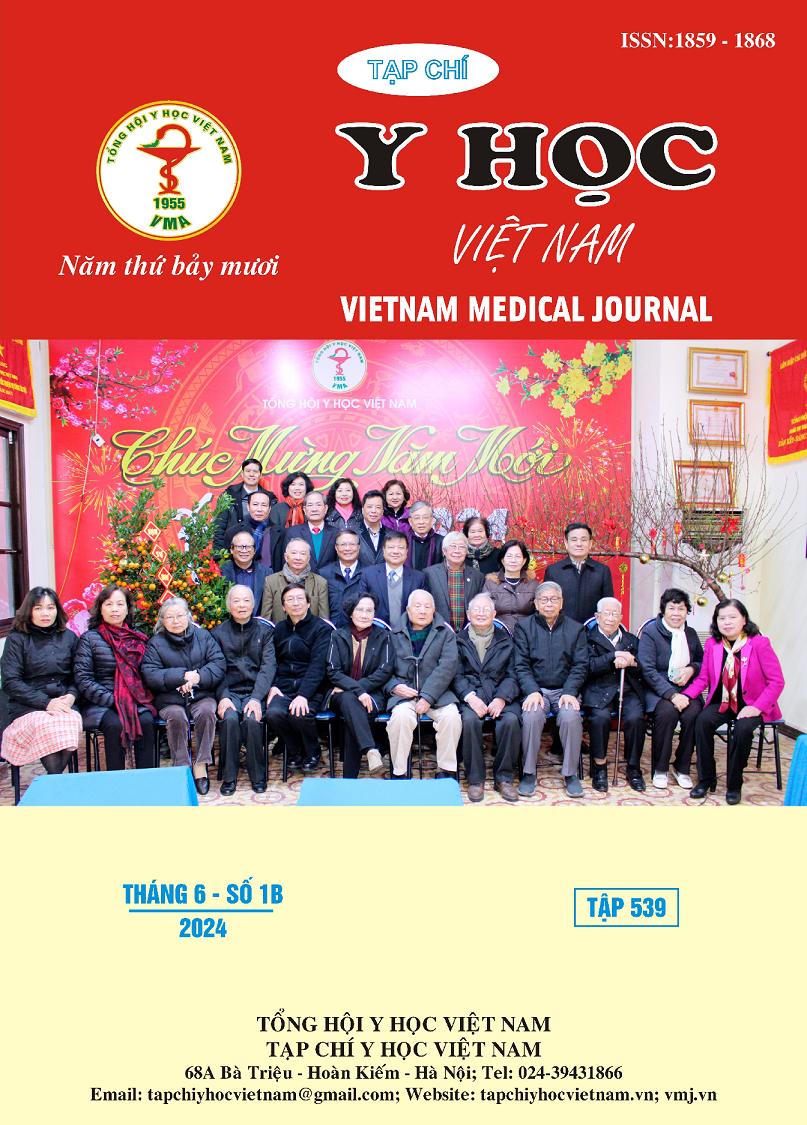ROLE OF MDCT IN DIAGNOSTIC OF DUODENAL PERFORATION
Main Article Content
Abstract
Objective: The purpose of this study was to describe CT scan features caracteristics and determine the value of these features in diagnostic of duodenal perforation. Methods: Prospective cross-sectional research. All patients diagnosed with duodenal perforation who visited Trưng Vương hospital from 01/01/2021 to 31/10/2023 were examined for Multidedector comptued tomography (MDCT). MDCT imaging results were compared with surgical findings. Result: there were 39 patients meeting the selection critia, of which 26 patients with duodenal perforation were identified at surgery. Age ranged from 14-88 years, median age was 58 years. The most common age group is 40-59 years old (38.46%), group ≤ 40 years old and >80 years old together account for 15.4%. Clinical diagnosis is mainly monitoring duodenal perforation +/- peritonitis, accounting for 71.8%. Among CT features, free abdominal air is the most common sign (84.6%), with the highest sensitivity (88.5%) but the low specificity (23.1%). The least common sign is abscess adjacent to the duodenum (2.6%) with the lowest sensitivity (0%) but highest specificity (92.3%). The sensitivity and specificity of other features are respectively: focal air accumulation next to the duodenum (sensitivity 69.2% and specificity 76.9%), free abdominal air (sensitivity of 88, 5% and specificity of 23.1%), focal fluid next to the duodenum (sensitivity of 42.3% and specificity of 84.6%), abdominal free fluid (sensitivity of 76.9% and specificity of 7.7%), duodenal wall thickening (sensitivity of 26.9% and specificity of 69.2%). Combining the duodenal wall defect and focal air accumulation next to the duodenum, the specificity and positive predictive value are approximately 100%. Conclusion: MDCT has an important role in diagnosing duodenal perforation.
Article Details
Keywords
MDCT, duodenal perforation.
References
2. Hainaux B, Agneessens E Fau - Bertinotti R, Bertinotti R Fau - De Maertelaer V, De Maertelaer V Fau - Rubesova E, Rubesova E Fau - Capelluto E, Capelluto E Fau - Moschopoulos C, et al. Accuracy of MDCT in predicting site of gastrointestinal tract perforation. AJR. 2006;187:1179-83.
3. Imuta M, Awai K Fau - Nakayama Y, Nakayama Y Fau - Murata Y, Murata Y Fau - Asao C, Asao C Fau - Matsukawa T, Matsukawa T Fau - Yamashita Y, et al. Multidetector CT findings suggesting a perforation site in the gastrointestinal tract: analysis in surgically confirmed 155 patients. Radiat Med. 2007(0288-2043 (Print)):113-8.
4. Nguyễn Đình Hối. Bệnh học ngoại khoa tiêu hoá. Nhà xuất bản y học 2013.
5. Tôn Long Hoàng Thân, Võ Tấn Đức, Nguyễn Thị Phương Loan. Đặc điểm hình ảnh x quang cắt lớp vi tính của thủng đường tiêu hóa do dị vật. Y học TPHCM. 2019;23:120-5.
6. Toprak H, Yilmaz TF, Yurtsever I, Sharifov R, Gültekin MA, Yiğman S, et al. Multidetector CT findings in gastrointestinal tract perforation that can help prediction of perforation site accurately. Clin Radiol. 2019;74(9):736.e1-.e7.
7. Yeung KW, Chang Ms Fau - Hsiao C-P, Hsiao Cp Fau - Huang J-F, Huang JF. CT evaluation of gastrointestinal tract perforation. Clin Imaging. 2004;28(5):329-33.


